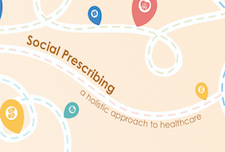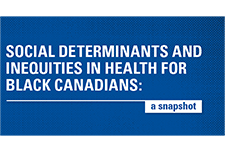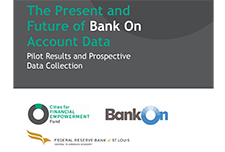Discover financial empowerment resources
Discover financial empowerment resources
How can we ensure anti-poverty programs are doing the most good for those who need them? One important step is to invest in scaling successful innovations within these programs. With government-led poverty alleviation programs reaching millions of people worldwide, these programs can model how...

To learn more about Canada's food and seed security, read the SeedChange Impact report 2022. This report shows how and where donations were distributed in 2022, the impact of their work and the global projects they are involved...

Fresh perspectives and new approaches are needed to generate results and effectively address the complexity and interconnectedness of the social and environmental issues confronting communities. It is imperative that we build our collective capacity in the practice of community innovation. It is...

Social prescribing is a means of connecting people to a range of community services and activities to improve their health and well-being. These services vary based on each person’s needs and interests, and can include food subsidies, transportation, fitness classes, arts and culture engagement,...

The following snapshot aims to highlight how Anti-Black racism and systemic discrimination are key drivers of health inequalities faced by diverse Black Canadian communities. Evidence of institutional discrimination in key determinants of health is also presented, including education, income, and...

The House of Commons Finance Committee recently released its call for pre-budget consultation briefs as the government considers its policy priorities for the 2021 federal budget. This toolkit created by Imagine Canada provides information on the reasons to submit a pre-budget consultation...

The Collaborative to Advance Social Health Integration (CASHI) is composed of a community of 21 innovative primary care teams and community partners committed to increasing the number of patients, families and community members who have access to the essential resources they need to be healthy....

Bank On coalitions are locally-led partnerships between local public officials; city, state, and federal government agencies; financial institutions; and community organizations that work together to help improve the financial stability of unbanked and underbanked individuals and families in their...

Bank On coalitions are locally-led partnerships between local public officials; city, state, and federal government agencies; financial institutions; and community organizations that work together to help improve the financial stability of unbanked and underbanked individuals and families in their...

Community engagement is about ensuring that those most impacted by social challenges have a say in designing and implementing solutions. The participation of intended beneficiaries and their families, neighbors, and trusted leaders can be an integral part of data-driven processes to achieve better...
This is an infographic on the Adaptive Prosperity framework developed by the Indiana Association for Community Economic Development. This is a collaborative vision of empowerment and assets focused on all parts of a...
The report’s primary aim was to analyze the existing microfinance industry in the United States from the point of view of its ability to scale up services to the underserved (the working poor) and its sustainability, i.e., its ability to operate such that MFIs cover all of their operating costs,...
This is a list of 27 indicators of effectiveness for backbone organizations, produced by FSG and Greater Cincinnati Foundation. This includes topics like strategy, alignment, shared measurement practices, and...
This collaboration primer is a hands-on resource for organizations seeking concrete methods to create sustainable partnerships. This resource is based on the literature focusing on inter-agency collaboration and the experiences of a multi-stakeholder partnership for health promotion. The...
These worksheets are to be used in conjunction with the ExpandNet/WHO document entitled Nine steps for developing a scaling-up strategy. For more extensive guidance on scaling up, see Practical guidance for scaling up health service innovations. These and other scaling up tools are available on the...
In the spirit of social justice, the Commission on Social Determinants of Health was set up by the World Health Organization (WHO) in 2005 to marshal the evidence on what can be done to promote health equity, and to foster a global movement to achieve it. The Commission calls on the WHO and all...
This guide contains 12 recommendations on how to design pilot projects with scaling up in mind, as well as a checklist that provides a quick overview of the scalability of a project that is being planned, proposed, or in the process of implementation. Based on a combination of a comprehensive...
This article is about evolving frameworks for collective impact. CI is now a permanent – even dominant – part of the landscape of community change. We believe that it’s time for an evolution in the revolution. First, there has been enough experimentation with CI, by diverse communities...
For the past 15 years, I have had the privilege of working at the Tamarack Institute, where we observe, document, and teach collective action to individuals and communities seeking to improve their social and economic conditions. We have landed on five core ideas to explain and teach this community...
Strategies for Transformative Scale. In their quest for answers, pioneers such as Year Up and the organizations that follow are experimenting with ways to help far more people while keeping a lid on the growth of their own organizations. Reviewing their efforts to date, we can identify nine...
This is a short article on why nonprofits need to engage the private sector, and three steps to achieving more effective...
Is Collective Impact merely a re-branding of collaborative approaches that have been used for years, or does this model provide new insights and techniques that will in fact break through on some of the most intractable problems affecting western societies? In this special issue of The...
As we hurtle towards a human community of 9.7 billion people by the year 2050, coupled with new technologies and the growing challenges of our planet’s carrying capacity, there is more and more discussion of systems and how they change or are created. The post-war era has witnessed an...
In 2011, the Peel Children and Youth Initiative (PCYI) adopted three strategic priorities to guide our collective, measurable work helping all children and youth to thrive in Peel. One of these priorities is our Enrolled By Six: Peel Postsecondary Strategy, encouraging families with eligible...
The Networked Change Report maps out the strategies and practices that made today’s most successful advocacy campaigns work, while so many others failed to create lasting change on the issues they address. We started by identifying advocacy campaigns over the last ten years that achieved...
